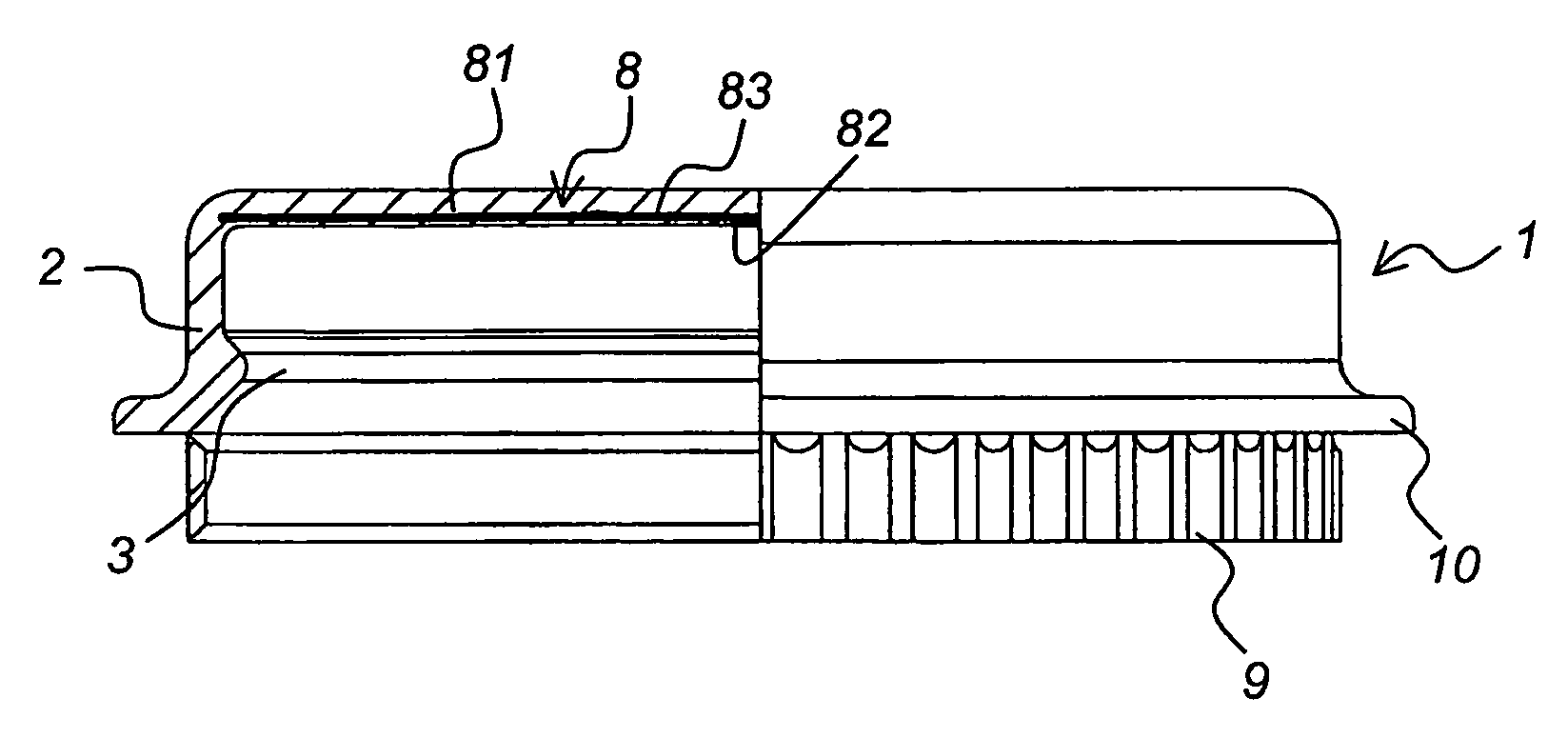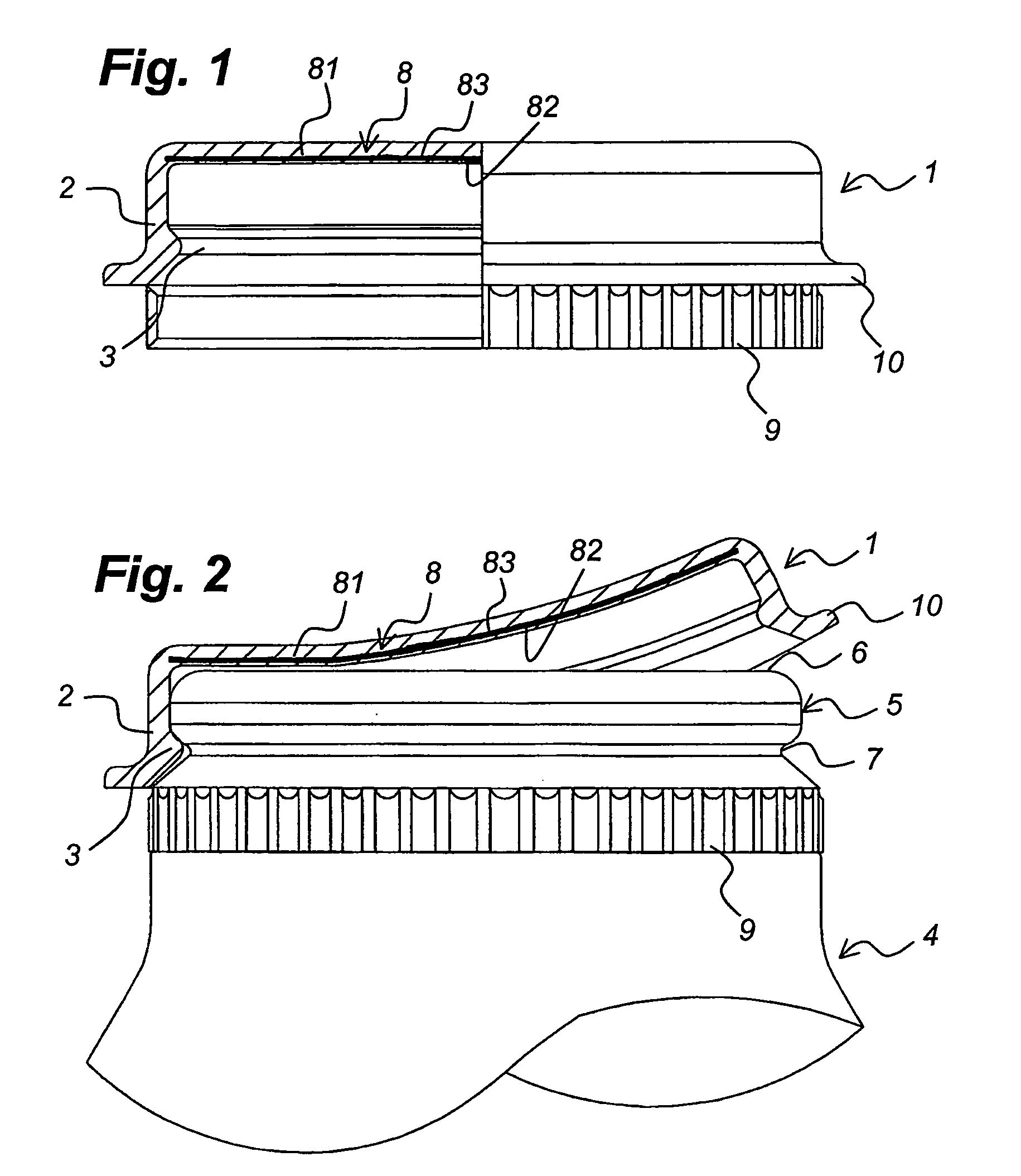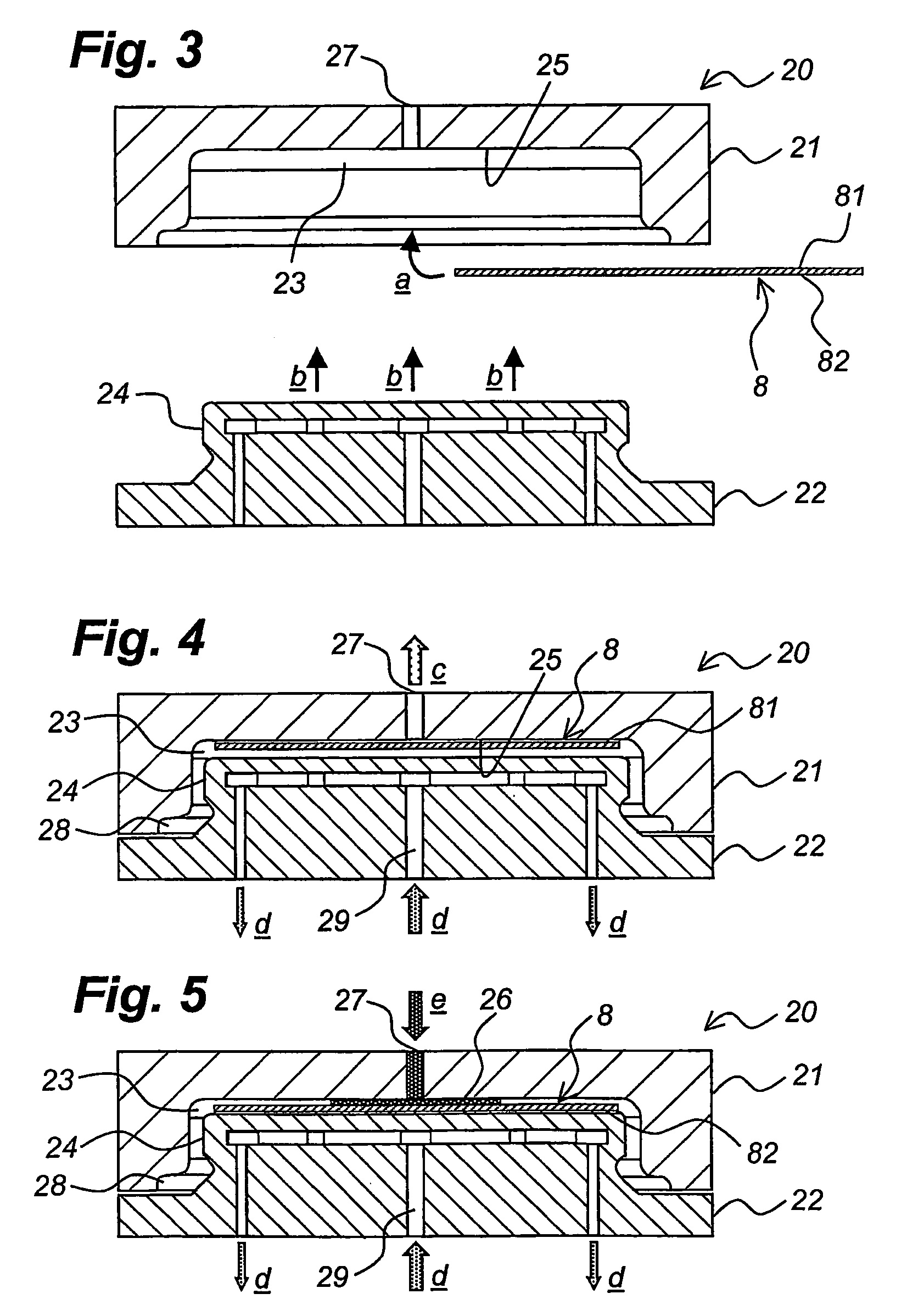Plastic cap and method of making the same
- Summary
- Abstract
- Description
- Claims
- Application Information
AI Technical Summary
Benefits of technology
Problems solved by technology
Method used
Image
Examples
Embodiment Construction
[0024]FIGS. 1 and 2 show a preferred embodiment of a plastic cap 1 according to the invention. As is evident, the plastic cap 1 is in the form of a snap cap, which has a circumferential skirt 2 with an internal annular bead 3, and is intended for a container 4, such as a beverage bottle made of plastic. The container 4 has a spout 5 with a flat opening end surface 6 facing the cap 1 and (with reference to the drawing) below the spout an annular groove 7. The annular bead 3 engages in this groove when the cap 1 is in its closed state and retains the cap 1 safely on the spout 5 of the container 4 by snap connection.
[0025] To ensure the longest possible shelf life of the contents of the container 4, the cap 1 has to engage the above-mentioned opening end surface 6 in a completely oxygen-tight sealing manner. To achieve this, an oxygen-tight liner 8 is arranged in the cap 1, in this case in the form of a thin aluminium foil 83 with a heat-weldable plastic layer 81, 82 on both sides the...
PUM
| Property | Measurement | Unit |
|---|---|---|
| Pressure | aaaaa | aaaaa |
| Circumference | aaaaa | aaaaa |
| Plasticity | aaaaa | aaaaa |
Abstract
Description
Claims
Application Information
 Login to View More
Login to View More - R&D
- Intellectual Property
- Life Sciences
- Materials
- Tech Scout
- Unparalleled Data Quality
- Higher Quality Content
- 60% Fewer Hallucinations
Browse by: Latest US Patents, China's latest patents, Technical Efficacy Thesaurus, Application Domain, Technology Topic, Popular Technical Reports.
© 2025 PatSnap. All rights reserved.Legal|Privacy policy|Modern Slavery Act Transparency Statement|Sitemap|About US| Contact US: help@patsnap.com



